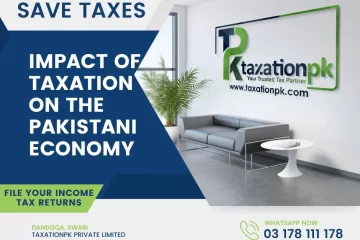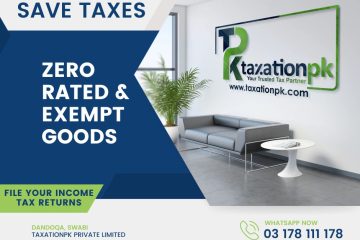The Income Tax Ordinance, 2001 (ITO) plays a crucial role in determining how businesses in Pakistan are taxed. A critical aspect of this involves understanding the classification of assets – tangible and intangible – as they impact tax calculations and depreciation deductions. This article explores these asset categories and their tax implications.
Tangible Assets
Tangible assets are physical, identifiable objects owned by a business that have a physical presence. These assets can be seen, touched, and measured. Some examples of tangible assets include:
- Property: Land, buildings, machinery, and equipment.
- Inventory: Raw materials, work-in-progress, and finished goods.
- Furniture and fixtures: Office furniture, computers, and other equipment used in daily operations.
Tax Treatment of Tangible Assets
Businesses can claim depreciation on tangible assets over their useful life. Depreciation allows businesses to spread the cost of the asset over its lifespan, reducing taxable income in the year of purchase and subsequent years. The specific depreciation rates for different types of tangible assets are outlined in the Income Tax Ordinance or prescribed by the Federal Board of Revenue (FBR). Here’s a table summarizing the depreciation rates for some common tangible assets:
| Asset Category | Depreciation Rate |
|---|---|
| Buildings (all types) | 10% |
| Furniture (including fittings) and machinery and plant (not otherwise specified), Motor vehicles (all types), ships, technical or professional books | 15% |
| Computer hardware including printer, monitor and allied items, Machinery and equipment used in manufacture of I.T. products, Aircrafts and aero engines | 30% |
| Offshore platform and production installations (for mineral oil concerns) | 20% |
| Ramp built to provide access to persons with disabilities (up to Rs.250,000 each) | 100% (full deduction in the year of purchase) |
Intangible Assets
Intangible assets are non-physical resources that hold value for a business. They lack a physical presence but can be valuable for generating future income. Examples of intangible assets include:
- Intellectual Property: Patents, copyrights, trademarks, and trade secrets.
- Goodwill: The reputation and brand value of a business.
- Licenses and permits: Rights to operate in a specific industry or use specific technology.
- Computer software: Programs and applications used by the business.
Tax Rates on Asset Disposals
When a business disposes of an asset, either by selling it or scrapping it, the gain or loss on the disposal is considered a taxable event. The tax rate applicable to the gain or loss depends on the nature of the asset:
- Capital gains: The sale of a capital asset, such as land or buildings, may be subject to a capital gains tax rate. This rate can vary depending on the type of asset and the holding period.
- Ordinary income: The sale of inventory or other assets held for sale in the ordinary course of business typically results in ordinary income, which is taxed at the regular income tax rate for businesses.
Conclusion
Understanding the distinction between tangible and intangible assets is crucial for businesses in Pakistan to accurately calculate their taxable income and claim appropriate deductions. Consulting a tax professional is recommended to navigate the specific tax implications of different asset categories and ensure compliance with the Income Tax Ordinance.






